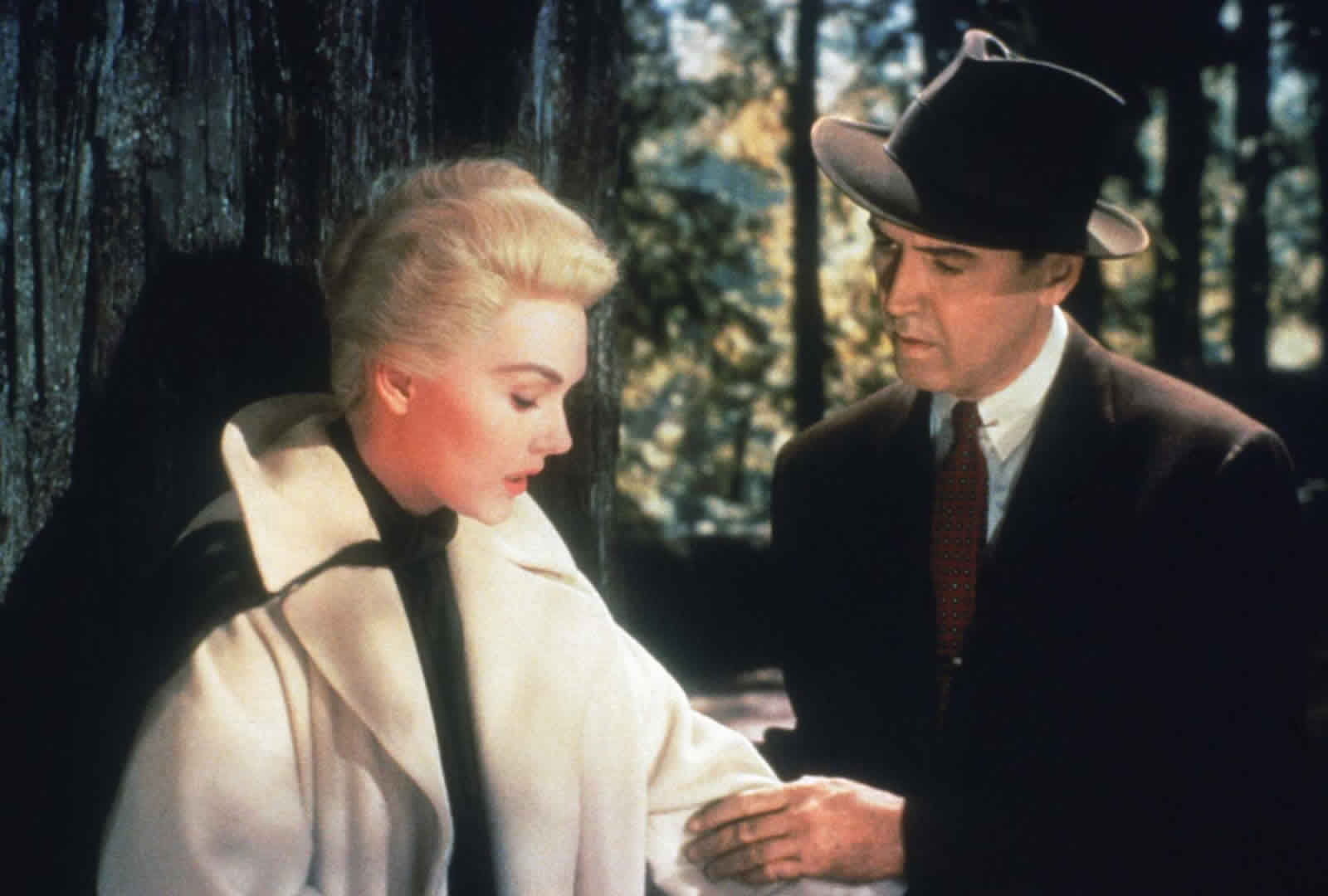Dizzying Heights
With so many fine films to his credit, it’s a challenge to pin down Hitchcock’s best film. For my money, the best one is Vertigo. That’s especially evident in the restored print that’s available on Blu-ray and DVD.
Perhaps the most rarefied of Hitchcock’s films, Vertigo is difficult to talk about without giving away important plot elements. If you haven’t seen it, don’t read too much about it. Just watch it, and then watch it again to see how carefully the film is constructed. Just as he does in Psycho, Hitchcock leaves a trail of bread crumbs so repeat viewers can enjoy the story with a renewed sense of awareness.
Vertigo is unusual in its use of associative color. In a 1962 interview with Françoise Truffaut, Hitchcock explained how the color green signals the main character’s state of mind:
At the beginning of the picture, when James Stewart follows Madeleine to the cemetery, we gave her a dreamlike, mysterious quality by shooting through a fog filter. That gave us a green effect, like fog over the bright sunshine. Then, later on, when Stewart first meets Judy, I decided to make her live at the Empire Hotel in Post Street because it has a green neon sign flashing continually outside the window. So when the girl emerges from the bathroom, that green light gives her the same subtle, ghostlike quality. After focusing on Stewart, who’s staring at her, we go back to the girl, but now we slip that soft effect away to indicate that Stewart’s come back to reality.
Pay close attention to Bernard Herrmann’s music. Though not as groundbreaking (or influential) as his score for Psycho, the Vertigo score reinforces the dreamlike and ghostlike qualities Hitchcock referred to in his interview with Truffaut. As in Psycho, the music makes even a simple drive down the highway rich with emotional meaning.
Vertigo
(1958; directed by Alfred Hitchcock)
Universal Studios (Blu-ray and DVD)
Monday, December 25 at 8:00 p.m. eastern on Turner Classic Movies
Reviews